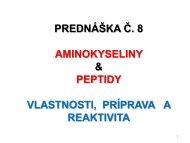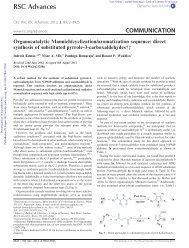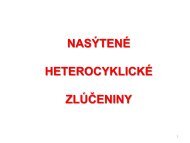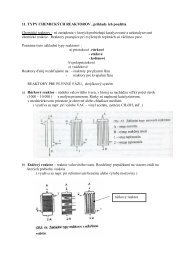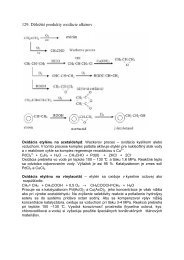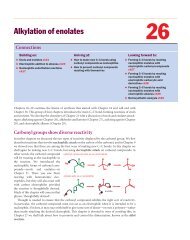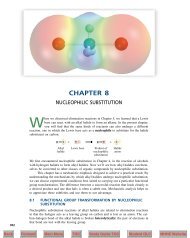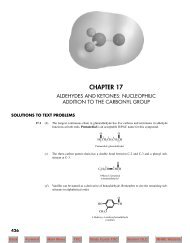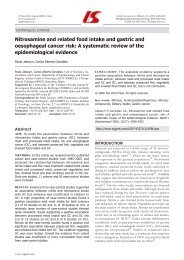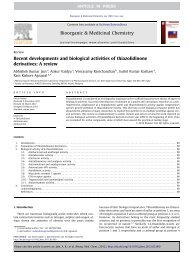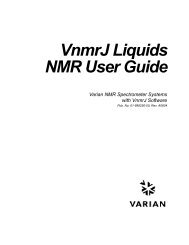You also want an ePaper? Increase the reach of your titles
YUMPU automatically turns print PDFs into web optimized ePapers that Google loves.
<strong>13</strong>.<strong>13</strong>.1.1.3.1.1.2 Method 2:<br />
Addition of the Azide Ion to Alkynes<br />
The azide ion undergoes addition to alkynes to give triazoles 82 in low to moderate yields<br />
(Scheme 37). Better yields are obtained with alkynes bearing electron-withdrawing<br />
groups. Almost quantitative yields (>98%) of 5-substituted 1H-1,2,3-triazole-4-carbaldehydes<br />
are obtained from the reaction of alk-2-ynals with sodium azide in dimethyl sulfoxide,<br />
at room temperature. [84] Generally the reaction is carried out in dimethyl sulfoxide or<br />
dimethylformamide; sodium azide [84–87] is frequently used as the azide ion source but lithium<br />
azide [88] and aluminum azide [89] have also been used. The mechanism of the reaction<br />
probably involves the nucleophilic addition of the azide ion to the triple bond followed by<br />
1,5-dipolar cyclization of the resulting vinyl anion. Addition of sodium azide to 1-aryl-5phenylpent-4-yne-1,3-diones<br />
in refluxing dimethylformamide gives the corresponding 4-<br />
(3-aryl-1,3-dioxopropyl)-5-phenyl-1H-1,2,3-triazoles 82 (R 1 = Ph; R 2 = COCH 2Bz, COCH 2CO-<br />
4-Tol, 4-MeOC 6H 4COCH 2CO) in good yields. [86]<br />
Scheme 37 Addition of Sodium Azide to Alkynes [84–86]<br />
R2 R1 + NaN3 FOR PERSONAL USE ONLY<br />
440 Science of Synthesis <strong>13</strong>.<strong>13</strong> 1,2,3-<strong>Triazoles</strong><br />
DMSO<br />
R 2<br />
R 1<br />
−<br />
+<br />
N<br />
−<br />
N<br />
N<br />
R 1 R 2 Yield (%) mp (8C) Ref<br />
H H 11 – [85]<br />
H Ph 40 148 [85]<br />
Ph Ph 16 140 [85]<br />
H CO2Me 49 145 [85]<br />
CO2Me CO2Me 54 <strong>13</strong>2 [85]<br />
Ph CHO >98 – [84]<br />
Bu CHO >98 – [84]<br />
Ph COCH2Bz 72 87 [86]<br />
Ph COCH2CO-4-Tol 72 122 [86]<br />
Ph 4-MeOC6H4COCH2CO 60 79 [86]<br />
H 3O +<br />
R 1<br />
R 2<br />
R 1<br />
N<br />
N<br />
N<br />
−<br />
The reaction of propynenitrile with aluminum azide (THF, reflux, 24 h) gives a mixture of<br />
the triazoles 83 (32%) and 84 (47%) (Scheme 38). [89] The formation of the tetrazole ring results<br />
from the addition of an azide ion to the cyano group.<br />
A. C. TomØ, Section <strong>13</strong>.<strong>13</strong>, Science of Synthesis, 2004 Georg Thieme Verlag KG<br />
R 2<br />
82<br />
N<br />
H<br />
N<br />
N



